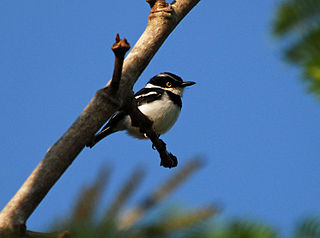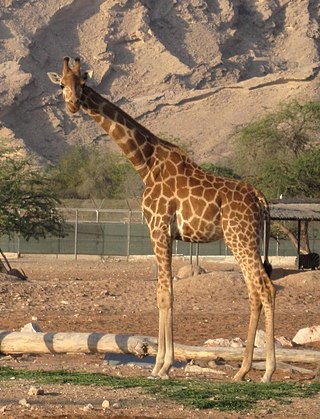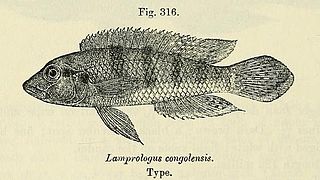
Herring are forage fish, mostly belonging to the family of Clupeidae.

Sardine and pilchard are common names for various species of small, oily forage fish in the herring family Clupeidae. The term 'sardine' was first used in English during the early 15th century; a somewhat dubious folk etymology says it comes from the Italian island of Sardinia, around which sardines were once supposedly abundant.

Lamprologus is a genus of fishes from the cichlid family. They are native to Lake Tanganyika and the Congo River Basin in Africa. The type species for this genus is Lamprologus congoensis, a species from the Congo River. The genus is under some revision and may eventually be restricted to these riverine types.

A species that is extinct in the wild (EW) is one that has been categorized by the International Union for Conservation of Nature as only consisting of living members kept in captivity or as a naturalized population outside its historic range. Classification requires exhaustive surveys conducted within the species' known habitat with consideration given to seasonality, time of day, and life cycle. Once a species is classified as EW, the only way for it to be downgraded is through reintroduction.
Lestinogomphus is a genus of dragonfly in the family Gomphidae. It contains the following species:

The western black-headed batis or Von Erlanger's batis, is a species of passerine bird in the wattle-eye family Platysteiridae. It is found over an extensive area of central Africa. Its natural habitats are subtropical or tropical dry forests and moist savanna. It was formerly treated as conspecific with the eastern black-headed batis.

Papyrocranus is a genus of freshwater fishes in family Notopteridae found in Middle and West Africa.
Garra congoensis is a small species of ray-finned fish in the genus Garra. It is native to fast-flowing sections of the lower Congo River in Africa.
Mangelia congoensis is a species of sea snail, a marine gastropod mollusk in the family Mangeliidae.
Clavatula congoensis is a species of sea snail, a marine gastropod mollusk in the family Clavatulidae.
Clavatula hattenbergeri is a species of sea snail, a marine gastropod mollusk in the family Clavatulidae.

The World's 25 Most Endangered Primates is a list of highly endangered primate species selected and published by the International Union for Conservation of Nature (IUCN) Species Survival Commission (SSC) Primate Specialist Group (PSG), the International Primatological Society (IPS), Global Wildlife Conservation (GWC), and Bristol Zoological Society (BZS). The IUCN/SSC PSG worked with Conservation International (CI) to start the list in 2000, but in 2002, during the 19th Congress of the International Primatological Society, primatologists reviewed and debated the list, resulting in the 2002–2004 revision and the endorsement of the IPS. The publication was a joint project between the three conservation organizations until the 2012–2014 list when BZS was added as a publisher. The 2018–2020 list was the first time Conservation International was not among the publishers, replaced instead by GWC. The list has been revised every two years following the biannual Congress of the IPS. Starting with the 2004–2006 report, the title changed to "Primates in Peril: The World's 25 Most Endangered Primates". That same year, the list began to provide information about each species, including their conservation status and the threats they face in the wild. The species text is written in collaboration with experts from the field, with 60 people contributing to the 2006–2008 report and 85 people contributing to the 2008–2010 report. The 2004–2006 and 2006–2008 reports were published in the IUCN/SSC PSG journal Primate Conservation,, since then they have been published as independent publications.
Lamprologus lethops is a species of cichlid fish from areas with fast current in the Congo River in Central Africa, where it is believed to live in depths as great as 160 m (520 ft) or 200 m (660 ft) below the surface. It reaches up to about 12.5 cm (5 in) in standard length, with females being somewhat smaller than males, is all whitish in color (non-pigmented), and essentially blind as adult, as their eyes are covered in a thick layer of skin. This is entirely unique among cichlids and an adaption to the perpetual darkness of its habitat, similar to the adaptions seen in cavefish. The eyes of juveniles are rudimentary and not covered by skin.
Teratoneura congoensis, the eastern Isabella, is a butterfly in the family Lycaenidae. It is found in the Republic of the Congo, the Democratic Republic of the Congo, Uganda, north-western Tanzania, Zambia and possibly Cameroon. The habitat consists of forests and woodland.
Pseudomussardia congoensis is a species of beetle in the family Cerambycidae, and the only species in the genus Pseudomussardia. It was described by Stephan von Breuning in 1974.

The Nubian giraffe, also known as Baringo giraffe or Ugandan giraffe, is the nominate subspecies or species of giraffe. It is found in Ethiopia, Kenya, Uganda, South Sudan and Sudan. It is currently extinct in the wild of the Democratic Republic of Congo, Egypt and Eritrea. The Nubian giraffe used to be widespread in northeast Africa. The subspecies was listed as Critically Endangered by the IUCN in 2018 for the first time due to a 95% decline in the past three decades.
Mimogmodera congoensis is a species of beetle in the family Cerambycidae. It was described by Breuning in 1953.
Planodema congoensis is a species of beetle in the family Cerambycidae. P. conoensis was described by Stephan von Breuning in 1942. This species lives in Africa in the countries of Ivory Coast, Republic of the Congo, Democratic Republic of the Congo, Central African Republic, Ghana, Guinea, Gabon and Cameroon.

Lamprologus congoensis, the Congo lionhead cichlid is a species of riverine cichlid which is widespread in the Congo River, it is the type species of the genus Lamprologus.










